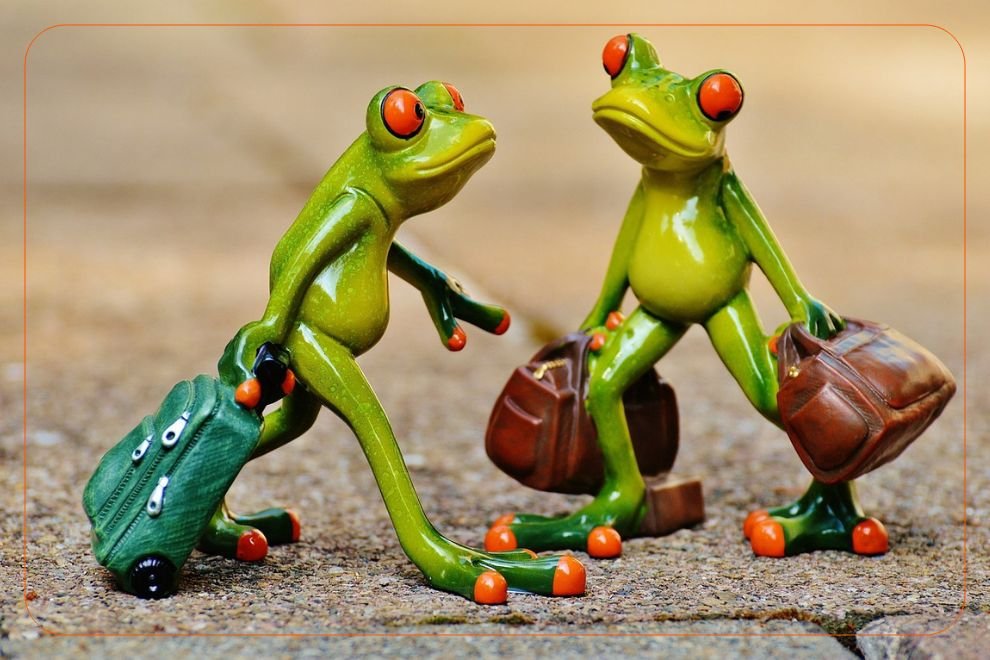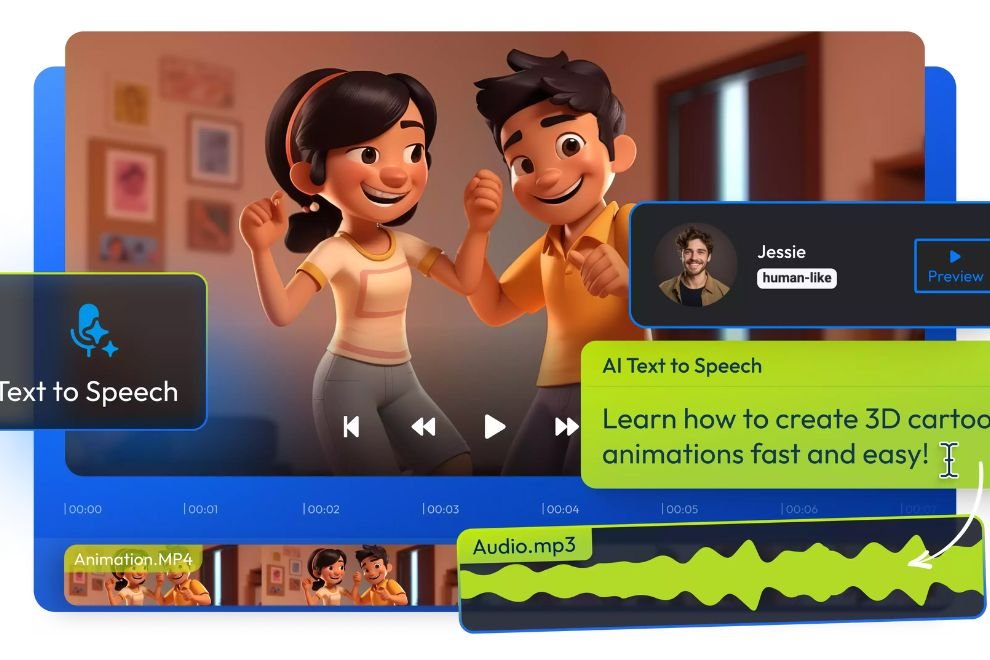How to Incorporate Lash Serum into Your Daily Beauty Routine

Are you tired of having short or sparse eyelashes that won’t grow no matter what you do? Do you feel like even using the best mascaras is not giving you the lash appearance you want? While getting the right nutrition and reducing stress are always beneficial ways to improve your health and increase hair growth, there are some products you can also consider to increase your lash appearance. Here is how to choose the right lash serum for you and how to incorporate that serum into your daily beauty routine to maximize your last growth. Choose the Right Serum If you’ve decided that using a lash serum is the right choice for you, your next step is finding the right one. There are a variety of over-the-counter serums you can buy that have ingredients like biotin, peptides, green tea extract, panthenol, and amino acids that can help strengthen your lashes and encourage growth. These can range in price from around $10 all the way up to $100 or more depending on the kind you get. You can also talk to your healthcare professional about getting a prescription lash serum like Latisse. Latisse’s active ingredient is bimatoprost. This was initially used to lower eye pressure in those with glaucoma but it was found that a side effect of it was the increase of eyelash length and density. It was then marketed as a prescription lash serum. To get Latisse, you need to have a prescription from a healthcare professional and should be aware of side effects like irritation and darkening of the iris or eyelid skin. Know How to Use It Once you’ve chosen the right lash serum, you need to know best practices for how to use it. If you have an over-the-counter serum, it will likely come in a tube that is similar to mascara and has a built in brush. If you choose prescription Latisse, you will get a small container of the liquid that you will have to squeeze a drop onto the provided disposable brushes. You will take off all your make-up in the evening and apply the serum along your upper lash line. There is no need to put the serum on lower lashes as blinking will distribute the serum. You should start to notice a difference in your lashes within the first six weeks though it may take three months or more to see full effects. Continue to use your lash serum daily until you have achieved optimal results, then you can start using it every other day. Build a Strong Routine The key to remembering to use your lash serum every day is to build into a strong skincare routine. Starting off with a gentle eye makeup remover, then washing your face with a cleanser that is right for your skin is the best way to begin. You can then add in your lash serum along with a face serum that addresses any skin concerns, followed by a moisturizer to keep your skin hydrated overnight. Incorporating Lash Serum for Longers Eyelashes If longer or fuller lashes is one of your beauty goals, you should look into an over-the-counter or prescription lash serum. No matter which you choose, you need to follow best practices when using it and and build it into a strong skincare routine so you can create healthy beauty habits that last a lifetime.
Why Time-Sensitive Travel Can Be a Game-Changer

The ability to travel at a moment’s notice has become more important than ever. Whether for business, emergency situations, or spontaneous opportunities, time-sensitive travel can be the difference between missing out and making a lasting impact. While traditional travel planning allows for flexibility and price comparisons, there are unique advantages to being ready to move quickly. For many, the game-changing power of time-sensitive travel lies in its ability to unlock doors that would otherwise remain closed. Seizing Last-Minute Opportunities Time-sensitive travel enables individuals and organizations to seize unexpected opportunities. Business professionals, for instance, may need to fly across the country—or the world—for a last-minute meeting or presentation. Responding promptly can demonstrate commitment, agility, and leadership. Similarly, job seekers or freelancers might be called in for an in-person interview or project, and being able to say “yes” right away can be a decisive advantage. Spontaneous personal opportunities also abound. From attending a friend’s destination wedding on short notice to grabbing a rare travel deal, time-sensitive travel empowers people to act on impulse without regret. For many, these unexpected adventures often become the most cherished memories. Responding to Emergencies In times of crisis, the need to travel urgently can be a matter of family, safety, or legal obligation. Whether it’s attending a funeral, supporting a loved one in distress, or dealing with an international legal issue, delays can have severe consequences. In these situations, the ability to move quickly can make a critical difference. However, emergencies often expose the friction in traditional travel logistics—especially when it comes to documentation. Expired passports or missing travel credentials can turn an urgent situation into a nightmare. Fortunately, services exist to help bridge that gap. When time is of the essence, having access to a fast track passport service can be indispensable. These services expedite the passport process, helping travelers meet tight timelines with peace of mind. Staying Ahead in Competitive Industries For entrepreneurs, creatives, and consultants, time-sensitive travel can signal professionalism and dedication. Attending a last-minute film premiere, book signing, or product launch may seem glamorous, but it’s often strategic. Being there in person can lead to connections, collaborations, and opportunities that virtual presence simply can’t match. In industries like tech, entertainment, or fashion, the early bird often gets the worm—or in this case, the deal. When a major investor wants to meet face-to-face in another city tomorrow, being able to hop on a plane might be the catalyst for your next big break. The Psychological Edge There’s also a powerful psychological component to being travel-ready. People who can move quickly tend to feel more in control, flexible, and confident. There’s a sense of empowerment in knowing that you’re not tethered by red tape, outdated documents, or logistical delays. Instead of being reactive, you become proactive—someone who can make things happen. Final Thoughts Time-sensitive travel isn’t just about speed; it’s about unlocking possibilities. Whether for seizing a once-in-a-lifetime opportunity, responding to a crisis, or staying competitive in a dynamic industry, the ability to travel quickly gives you an edge. With the right tools and support—like reliable fast track passport services—you can turn urgency into advantage and make every moment count.
A Straightforward Guide to Choosing Hosting That Keeps You in Control

If you are looking forward to launching your first website, then you must understand your web hosting options. With a massive range of web hosting platforms available, you might feel overwhelmed. However, ideally, you should be looking for a hosting service that gives you the most control. With that said, let us explore some of the factors that you must consider at the time of opting for a hosting platform. Assess the Hardware The first thing that you must do when opting for website hosting is to use hardware. Why, you might ask? The reason is that your website’s stability and performance are directly affected by the server’s hardware. With that said, make sure that your hosting provider has the latest hardware components, such as sufficient RAM and potent CPUs. For instance, a vps hosting platform comprises a powerful CPU and efficient hardware design, which enables flexibility, scalability, and high performance. By choosing a modern server, such as Liquid Web with updated technology, you can ensure faster load times while easily handling more traffic. Assess the Uptime After determining your hardware priorities, assess the uptime. Most hosting providers promise nearly 100% uptime, which means that the operation server will be up almost the entire time. Ideally, you should take your time digging deeper to verify the actual uptime of the hosting performance. Nonetheless, if the uptime is higher, it indicates that your website will remain accessible to online users. Read through feedback and reviews left by other clients so that you can get a clear picture of the provider’s actual performance. Assess Bandwidth Modern hosting providers offer sufficient bandwidth and storage for websites. However, it all comes down to your website’s needs. For instance, if you are planning to run a website that is loaded with media or if you are planning to manage more than one website, then you must go through the fine print and ensure that the heavy-media content website will be completely supported. Assess the Option of cPanel At the time of choosing a hosting provider, you might want to opt for shared web hosting with cPanel. The underlying reason is that shared web hosting with cPanel is actually an ideal choice as it is filled with amazing features but also budget-friendly. The features that are offered by shared web hosting enable you to manage websites effectively, such as smooth email configuration and effective database management. With that said, you should look for hosting providers that enable safe and reliable shared cPanel web hosting. Believe us when we tell you that you will find it way easier to manage your website. Assess Security Features When you are ready to select a hosting provider, you must also assess the security features and be prepared all the time to deal with any potential cyber threats. With that said, make sure that the hosting platform comprises firewalls, DDoS protection, and IDS or prevention systems. SSL certificates are equally crucial as they ensure website confidentiality and integrity.
What to Expect When Working With an Employment Lawyer

According to PowerToFly, in the U.S. alone, 61% of workers have experienced or witnessed discrimination based on age, race, gender, or sexual orientation. These are not the only categories that can make you an object of discrimination. Labor laws are quite complicated most of the time, making it difficult for workers who have to deal with discrimination, retaliation, wage disputes, and harassment. Yet, these laws, along with advice from employment lawyers, can help a person defend his or her rights and hold employers accountable for some workplace issues. Los Angeles employment lawyer Omid Nosrati also says a lawyer can help you understand your rights and options under the law. They can also begin the necessary legal proceedings to help you obtain the total compensation you deserve. This article will highlight the things you can expect to happen during an employment lawyer appointment. Initial Consultation and Case Evaluation In the first meeting with your employment lawyer, he or she will want to figure out whether there is merit to your claim. The lawyer will inform you about the options available. Your report should include the disagreement, how it was resolved, and documentation of your correspondence with your boss. Paperwork that is relevant to the case like emails, contracts, or anything else that might be useful, should be attached with your report. The more details you provide, the better the lawyer can assess your case. You should also inquire how experienced the attorney is with similar matters. Investigation and Evidence Gathering When the decision to proceed with the case is made, the employment attorney will gather evidence to try to put forward the strongest case possible. He or she may want to organize your employment records, interview any number of witnesses, look at communications between you and your employer, and check your contract, among other things. If your lawyer asks for papers or information, you should give it to them right away. They will be able to look into it and move forward with the case faster if you do it soon. Legal Strategy and Planning The lawyer then comes up with a formal plan based on the details of your case. Your lawyer might tell you to go to court, work out a deal, or take another step, like submitting a complaint to the Equal Employment Opportunity Commission (EEOC). At this point, the lawyer will provide you the options available, the pros and cons of taking either course, and hear out the goals you want to achieve. If settlement is suggested, then negotiations will begin between the lawyer and your employer’s legal counsel. If litigation is required, the lawyer will begin preparing for court. Don’t be shy about asking about the plan and what to expect at each step. You can better manage your goals and plans if you are knowledgeable about your lawyer’s legal strategy. Representation and Advocacy When your case progresses to negotiations or court, your lawyer will represent you through all legal proceedings. He or she will file legal documents on your behalf, represent you at settlement discussions, or argue in court for you. Your lawyer will advocate for your interests and cross-examine witnesses. You should talk to your lawyer often so that you can give them any extra information they might need. Settlement or Judgment Most employment cases finish with settlement talks, but if the case goes to court, a judgment will be made. Your lawyer will see to it that you are treated fairly and help you understand what the court said. A lawyer’s job is to protect your interests and needs in any settlement. Your lawyer will tell you what happened and help you decide what to do next if the court rules against you. Your lawyer might also be able to help you file an appeal if the judge rules against you. Before signing any settlement offer at all, your lawyer should thoroughly explain the terms to you. Your lawyer will check if the settlement fully covers the damages you have sustained. Ongoing Support and Advice The employment lawyer will be there with you even as the case is closing. He or she can assist if you find there has been a breach of settlement terms or if problems arise post-settlement within the workplace. To fix issues that came up after the settlement, your lawyer could enforce settlement terms so that you can receive the money you are owed. If a job issue comes up after the case is over, whether it’s retaliation or something else, your lawyer should be able to help you. Talk to your lawyer often in case work issues arise. Legal help on a regular basis can keep you out of trouble and give you peace of mind.
Are You Entitled to a 15-Minute Break? What the Law Says

Work can be tiring, and that little 15‑minute pause can feel like a lifesaver. But are you required to take it? And are you sure you know your rights regarding breaks at work? Most believe they only have a 15-minute break, but it all depends on the state and what an employer has always practiced. At the federal level, there’s no law forcing employers to provide breaks. However, if your employer gives breaks that are between 5 and 20 minutes—like a 15-minute coffee break—they must pay you. Those minutes count as work time under the Fair Labor Standards Act (FLSA). Some require short, paid breaks; others don’t. If your state has a 15 minute break law, it overrides federal rules and typically only helps you. Let’s learn what the law has to say about your break rights. Understanding Break Laws by State Break laws have major differences from state to state. Some States specify that breaks be taken at certain times, and other States leave that decision to the employer. For example, in California, every four hours worked mandates a ten-minute break, whereas Texas has no state law on breaks. Meal breaks are at least thirty minutes long for shifts longer than six hours in States like New York. Knowing your state’s legislation will ensure you get breaks. If you’re unsure, ask HR about local legislation. With information, you can fight for workplace rights. Federal Regulations on Breaks Break laws are not determined by state law alone. The Fair Labor Standards Act (the FLSA) constitutes the primary federal guidelines. Under the FLSA, there is no requirement for any breaks. However, payment must be made for any time worked beyond 40 hours during the week, including any period of breaks. Under its provisions, employers must pay for short breaks of approximately five to twenty minutes. However, employers generally do not pay for meal breaks. Remember that in addition to those established by the FLSA, such laws relating to work breaks can be supplemented by a state at any time. Types of Breaks: Meal Breaks vs. Rest Breaks The difference between meal and rest breaks is essential for employees and employers to know. Meal breaks are supposed to be at least 30 minutes so that you may sit down to eat and re-energize yourself. It also means here that you are free from work duties so that you can step away fully. Rest breaks, however, are preferably 10 to 15 minutes of short intervals from your work shifts, whereby you may refresh while not taking an extremely long time away from your work area. Meal breaks are mostly unpaid, but rest breaks may be paid depending on your employer’s policies. Understanding this surely will give you the advantage of getting along in the world of work with a little more ease. Who Is Eligible for Breaks? Eligibility of employees for breaks may differ according to company policies or state laws. In certain industries, your right to take breaks may be specified more clearly. Employers are required by law in many states to provide rest periods to workers who have been on the job for a few hours. Not every employer must give breaks, so it is essential to check the policy of your company. Part-time workers or seasonal employees might be considered under different terms than full-time workers. Regulations can exist regarding breaks for jobs like healthcare and hospitality. Knowing your company policies and the legislation in your jurisdiction will enable you to determine whether you are entitled to take breaks. Protecting Your Rights in the Workplace To maintain a safe and just environment, your rights must be protected. You have the right to be informed about work breaks, pay, and conditions. Learn about your local and federal labor regulations so you know what you should get. If someone is breaking your rights, write down what happened and tell your boss or HR about it. Don’t be embarrassed to file a complaint if you believe you have a valid reason. Being in a union can give you strength and resources. This healthy work environment benefits everyone so they can do their work. To ensure equitable treatment, be aware of your rights, defend yourself, and pursue justice. Rights matter. When respected, they become an asset for the whole working community.
20 Best Places to Visit in Pune: Top Attractions to Explore in the Cultural Capital of Maharashtra

Pune, the cultural capital of Maharashtra, is a city where rich history meets youthful energy. Known for its educational institutions, pleasant weather, historic forts, and lively neighborhoods, Pune offers diverse attractions for every type of traveler. Here’s a hand-picked list of the 20 best places to visit in Pune to make your visit memorable. 1. Shaniwar Wada The iconic Shaniwar Wada Fort, built in 1732, was once the seat of the powerful Peshwas. Explore its grand gates, gardens, and the famous light and sound show that narrates its storied past. 2. Aga Khan Palace Built in 1892, this stunning palace is an architectural marvel and a key monument in India’s freedom struggle. It houses a museum dedicated to Mahatma Gandhi. 3. Sinhagad Fort A favorite spot for trekking, Sinhagad Fort offers breathtaking views of the Sahyadri mountains and has a rich history linked to the Maratha empire. 4. Dagdusheth Halwai Ganpati Temple One of the most revered temples in Pune, this temple is known for its beautiful Ganesh idol and attracts thousands of devotees, especially during Ganesh Chaturthi. 5. Osho Ashram The Osho International Meditation Resort in Koregaon Park is a peaceful retreat for meditation and wellness seekers from around the world. 6. Pataleshwar Cave Temple An ancient 8th-century rock-cut temple dedicated to Lord Shiva, located right in the heart of the city. 7. Raja Dinkar Kelkar Museum This museum houses an extensive collection of artifacts, showcasing India’s rich art, culture, and everyday life from centuries past. 8. Mulshi Lake and Dam A scenic picnic spot surrounded by green hills and waterfalls, especially popular during the monsoon season. 9. Vetal Tekdi The highest point in Pune, Vetal Hill is a great spot for nature walks, bird watching, and panoramic views of the city. 10. Koregaon Park Pune’s most cosmopolitan neighborhood, known for its lush avenues, trendy cafes, boutiques, and vibrant nightlife. 11. Parvati Hill and Temple This beautiful hillock offers a short trek with rewarding views of Pune city and features an 18th-century temple complex at the top. 12. Khadakwasla Dam Located about 20 km from the city, this popular hangout spot offers a peaceful lakeside atmosphere perfect for evening drives and roadside snacks. 13. Pune Okayama Friendship Garden Also known as Pu La Deshpande Garden, this Japanese-themed garden is a calm oasis with manicured lawns, streams, and walking paths. 14. Empress Garden Spread over 39 acres, this lush garden near Pune Camp area is a perfect spot for picnics and relaxing under ancient trees. 15. Lal Mahal This historic red palace was once the childhood home of Chhatrapati Shivaji Maharaj. It’s an important site for history enthusiasts. 16. Saras Baug A serene garden with a temple dedicated to Lord Ganesh, Saras Baug is a favorite among locals for evening strolls. 17. National War Memorial Southern Command An inspiring memorial honoring the soldiers who sacrificed their lives for the nation. The museum and park are well maintained. 18. Shinde Chhatri A beautiful memorial dedicated to Mahadji Shinde, a Maratha leader, known for its stunning architecture and serene ambiance. 19. Rajiv Gandhi Zoological Park Also known as Katraj Zoo, this park is home to diverse wildlife and a snake park, making it a fun stop for families. 20. Pashan Lake A peaceful spot on the outskirts of Pune, Pashan Lake is ideal for bird watching and enjoying nature away from the city’s rush. Final Thoughts From historical forts and temples to scenic hills, gardens, and cultural hubs, the best places to visit in Pune showcase the city’s unique blend of old-world charm and modern vibrancy. Whether you’re an adventure seeker, a history lover, or someone who just wants to unwind, Pune has the perfect place waiting for you. Keyword: best places to visit in Pune
Understanding the Importance of Usability Testing

Usability testing helps improve product design and functionality by testing how easily users can use a system. It identifies potential issues early on to make sure products are user friendly and efficient. Teams get actionable insights through realistic scenarios and real user feedback, resulting in higher satisfaction and better performance of the final output. Enhancing user experience with usability testing Refining how a digital product feels to use starts withusability testing. Watching users use the interface allows developers and designers to identify what is difficult or frustrating for them. Based on these points, teams can improve navigation, arrange content better, and remove anything that could confuse users. As a result, the interface feels natural and matches what users expect. When users can reach their goals easily without much difficulty, usability testing leads to greater customer satisfaction, engagement, and lasting success for the product. Identifying design flaws early in development Usability testing helps catch flaws in the design at an early stage of development. Testing the product with users in advance allows developers to spot usability issues that could be missed after it is launched. Examples of these issues are labels that are not easy to understand, awkward button placement, and processes that are not efficient. If you find an issue early, it costs less to address it. Also, testing early helps teams enhance both the look and the functioning of their product, making it more polished when it is released. By acting ahead of time, the company saves time, resources, and risks to its image. Improving accessibility across diverse user groups Usability testing plays a crucial role in developing inclusive products that meet the needs of people of different abilities and backgrounds. It helps understand the way people with disabilities or using assistive technology interact with digital platforms. Testing also uncovers cultural, linguistic, and demographic factors that affect user behavior. With this in mind, teams can add accessible features like alternative navigation methods, readable fonts, and adaptive interfaces. With inclusivity becoming an expectation in digital design, usability testing ensures that no user segment is missed. In addition to accessibility, designing with accessibility in mind also adheres to global standards and enhances overall usability for everyone. Supporting informed product iteration and innovation Usability testing is an ongoing process, not just a one time activity, to drive continuous improvement and innovation. Feedback from each testing phase is used to adapt future updates and feature enhancements. Instead, it helps to prioritize development tasks based on actual user needs rather than assumptions. User feedback will either validate or dispute the new concepts, empowering teams to experiment with different design ideas. Innovation is fostered while risk is minimized through this cycle of testing and refining. Products evolve over time in order to adapt to shifting user expectations and market demand, in order to remain competitive and relevant within a constantly changing user satisfaction driven market. Conclusion Introducing usability testing into the development cycle guarantees user friendly, intuitive products. With its no-code, AI powered platform, Opkey automates this process to facilitate rapid usability test creation and execution across web, mobile and enterprise apps. Opkey test automation helps teams deliver quality and accessible solutions that users can actually relate to, by supporting realistic feedback and continuous improvement.
Beyond the Breach: Why Executive Teams Must Think Like Hackers to Lead in the AI Era

Cyberattacks have evolved, and today’s threats do more than target systems. They exploit behaviors, routines, and blind spots at the leadership level. As businesses continue to adopt AI-driven tools, cloud platforms, and hybrid work models, executives must stop seeing cybersecurity as an IT silo. The truth is, real security starts at the top, and it begins by learning to think like your adversaries. Why Traditional Leadership Thinking Falls Short Most executive teams focus on growth, efficiency, and innovation. But in the race to scale, many overlook the silent vulnerabilities created by tech adoption: misconfigured APIs, lackluster access control, and team-wide password reuse. Boardrooms often prioritize compliance over resilience. But check-the-box security leaves gaps. Breaches today aren’t always brute-force assaults; they’re precision strikes born from reconnaissance, social engineering, and psychological manipulation. This means traditional strategies aren’t enough. Forward-thinking leaders are now embracing red teaming not just as a security exercise, but as a strategic leadership mindset. What It Means to Think Like a Hacker Thinking like a hacker doesn’t mean acting maliciously. It means anticipating how someone with malicious intent might see, probe, and exploit your organization. Hackers don’t just look at code; they look at people. They search for overlooked entry points, human errors, communication gaps, and even misplaced trust. When executives adopt this mindset, they stop asking “Is our software secure?” and start asking better questions like: Red team operations simulate real-world attack scenarios to expose how an attacker might compromise your systems or personnel. The best ones test more than code; they test culture, decision-making, and response readiness. This is where red teaming becomes an invaluable tool. These aren’t just vulnerability scans. They’re immersive tests that reveal how attackers bypass layers of security using tactics like social engineering, credential stuffing, physical intrusion, and lateral movement. The most effective red team exercises go beyond code and firewalls. They test: Thinking like a hacker means anticipating the unexpected and seeing your company not as a fortress, but as an ecosystem with weak links worth fortifying. It’s not about fear-mongering; it’s about empowering leaders to move from passive defenders to active strategists. Why Executive Teams Should Embrace Red Teaming Principles You don’t need to lead a tech company to benefit from adopting red team tactics in leadership thinking. Here’s how executive teams can apply red teaming principles to stay ahead: AI & Automation: The New Risk Frontier AI offers incredible efficiency, but it also introduces new risks, many of which executive teams are underprepared to address. Consider: Red team simulations can help companies evaluate how AI tools might be weaponized against them, from deepfake impersonation to automated network mapping. The takeaway? You can’t manage what you don’t understand. Leaders must stay fluent in how AI interacts with their tech stack and how it could be exploited. Building a Leadership Culture of Cyber Readiness Being cyber-aware as a leader is no longer optional—it’s foundational. To create a resilient organization, executive teams should: These practices turn reactive leadership into proactive resilience, and that shift can be the difference between a near miss and a catastrophic breach. Red Teaming as a Strategic Advantage In today’s high-stakes digital economy, the best leaders are both risk-averse and risk-aware. They don’t just trust their tools; they test them, and they don’t view cybersecurity as a compliance issue. They treat it as a pillar of their brand’s long-term survival. By thinking like a hacker and leveraging frameworks, executive teams can evolve from reactive managers to offensive-minded visionaries.
AI Text-to-Video: The Next Big Breakthrough in Content Creation for 2025

What Is AI Text-to-Video? AI text-to-video is an emerging technology that enables users to generate professional-looking videos simply by typing a script or prompt. Powered by advanced AI models, this innovation bridges the gap between written ideas and visual storytelling without requiring cameras, actors, or video editors. Why It’s Trending Now In 2025, several breakthroughs in generative AI have made text-to-video tools accessible and effective. With platforms now offering lip-syncing, scene transitions, and visual consistency, creators can produce engaging videos within minutes—changing how marketers, educators, and influencers work. Who’s Adopting AI Text-to-Video Benefits and Capabilities Leading AI Text-to-Video Platforms Popular tools include web-based platforms and desktop apps offering rich features such as voice-over, automatic scene generation, and customizable avatars. Many offer free tiers for experimentation and paid plans for high-resolution exports and commercial use. Things to Consider Final Thoughts AI text-to-video tools are transforming how videos are made—making professional-quality content accessible to anyone with a script. As the technology evolves, expect more realism, creative control, and seamless integration into everyday workflows.
Y2K Nostalgia Revival: Why Early 2000s Aesthetics Dominate 2025

What Is Y2K Nostalgia? Y2K nostalgia is the growing trend of reviving early 2000s styles, technology, and pop culture. From flip phones and shiny lip gloss to low-rise jeans and camcorder filters, the trend brings back the carefree, playful spirit of the digital age when the internet was young and everything felt fresh and optimistic. Why It’s Trending Now In 2025, this throwback wave has captured two generations at once. For Millennials and older Gen Z, Y2K aesthetics spark memories of their childhood or teen years. For younger Gen Z, it’s a “new vintage” vibe—quirky, colorful, and refreshingly imperfect compared to today’s hyper-polished feeds. Social media, especially short-form video platforms, have made Y2K visuals cool again, with millions recreating early-2000s looks in fashion, makeup, and music. Where Y2K Nostalgia Shows Up 1. Fashion & BeautyLow-rise jeans, baby tees, cargo pants, butterfly clips, and velour tracksuits are back. Frosted eye shadow and shiny lip gloss are trending in makeup tutorials, with creators recreating iconic celebrity looks from the 2000s. 2. Retro Tech & FiltersFlip phones, wired headphones, and digital cameras are making a comeback as young people embrace a slower, tactile tech experience. Retro camcorder filters, pixelated overlays, and “vintage” disposable camera snaps are everywhere online. 3. Pop Culture ReferencesMusic, TV, and movies from the Y2K era are back in everyday content. Fans remix clips, revisit songs from early pop stars, and quote classic shows and rom-coms. Why Brands and Creators Love It How to Join the Y2K Trend Final Thoughts Y2K nostalgia is more than a trend—it’s a creative escape into a fun, familiar world of sparkly makeup, flip phones, and catchy pop songs. For brands, creators, and everyday fans, this revival is a reminder that sometimes, looking back is the freshest way to stand out.
